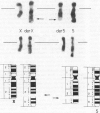Abstract
We describe a 3 year old girl with the typical clinical features of the X linked recessive condition, Hunter's disease. The diagnosis was confirmed by the pattern of urinary excretion of glycosaminoglycans and the absence of iduronate sulphatase activity in her fibroblasts. She also had an apparently balanced reciprocal chromosomal translocation 46XX,t(X:5) with the X breakpoint being between q26 and q27. Pedigree analysis, and the normal iduronate sulphatase activity in the mother's fibroblasts, serum, and hair roots indicate that the affected child represents a new mutation. Since the parents' karyotypes are normal, it seems that the translocation disrupted the iduronate sulphatase gene itself, thus mapping this to Xq26-27 for the first time. The severe clinical features, not expected in a girl, may be explained by non-random X inactivation.
Full text
PDF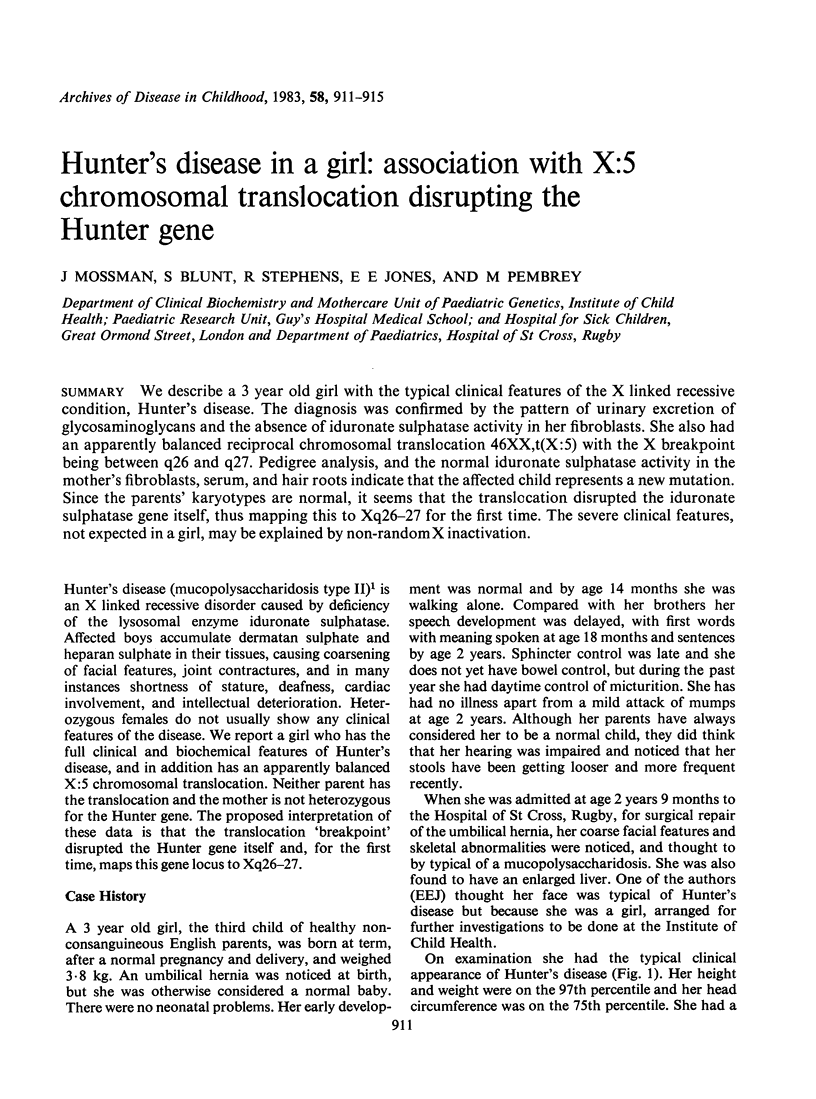

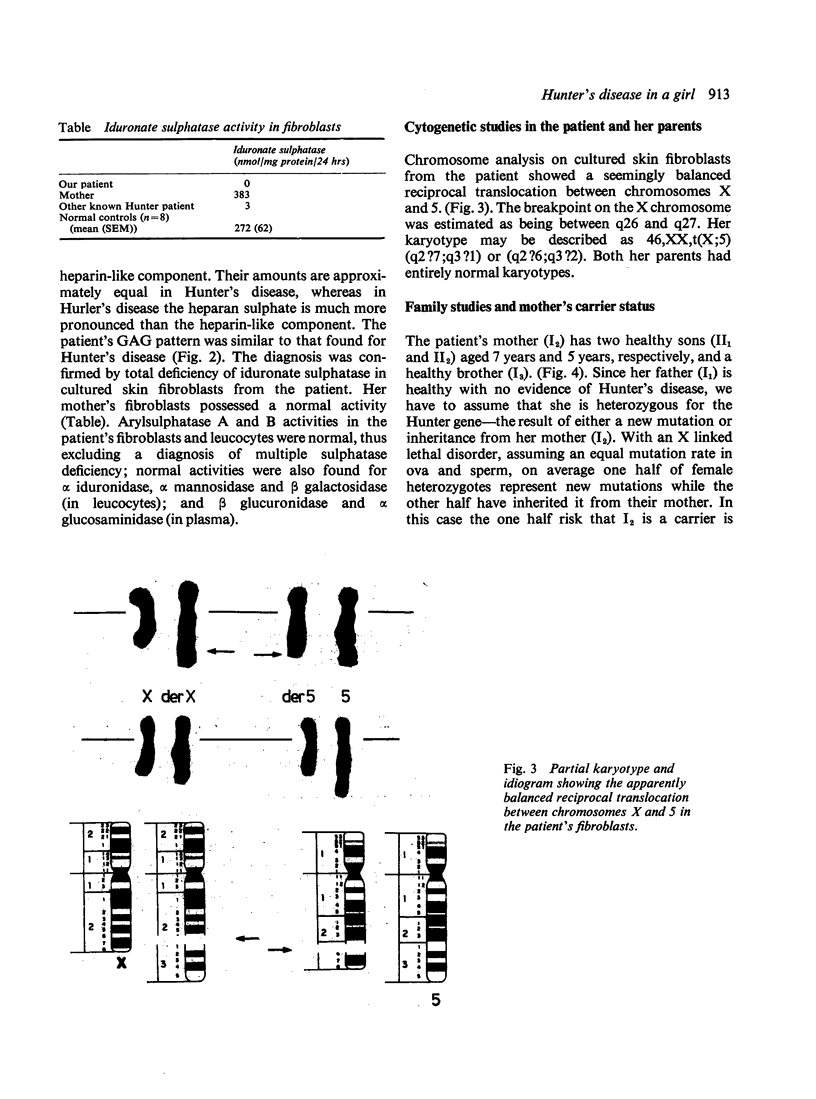
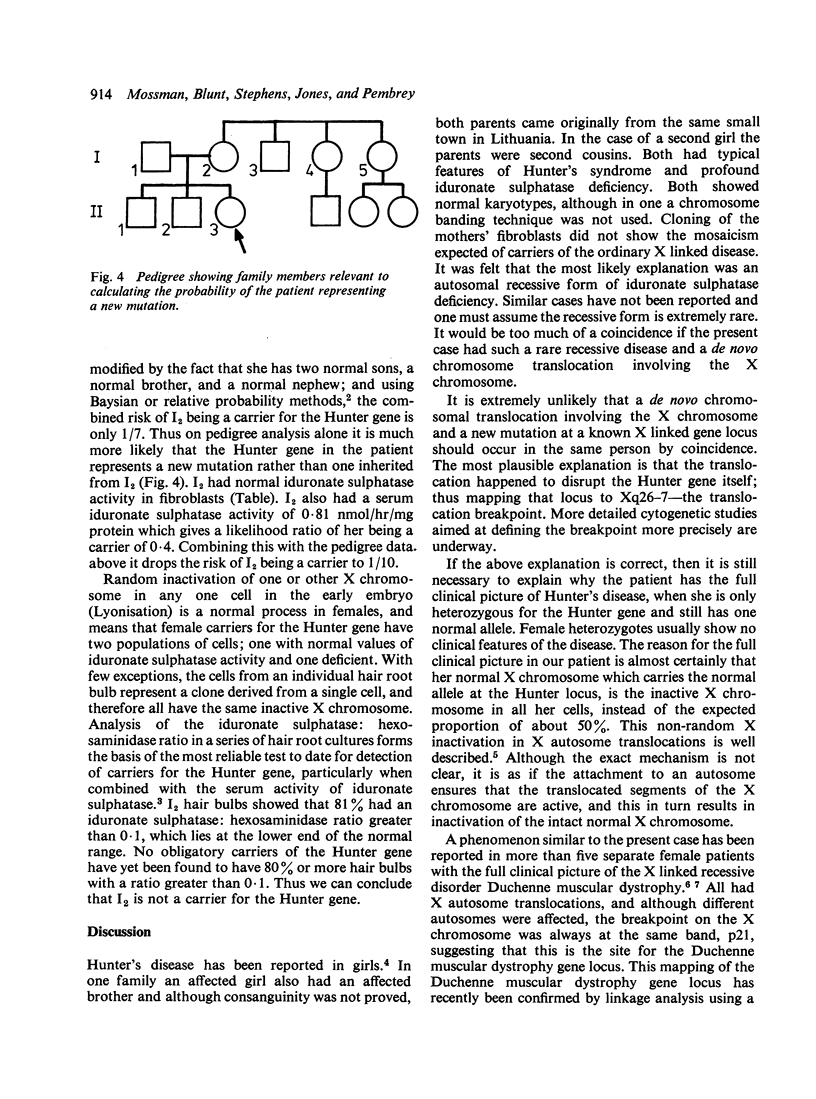
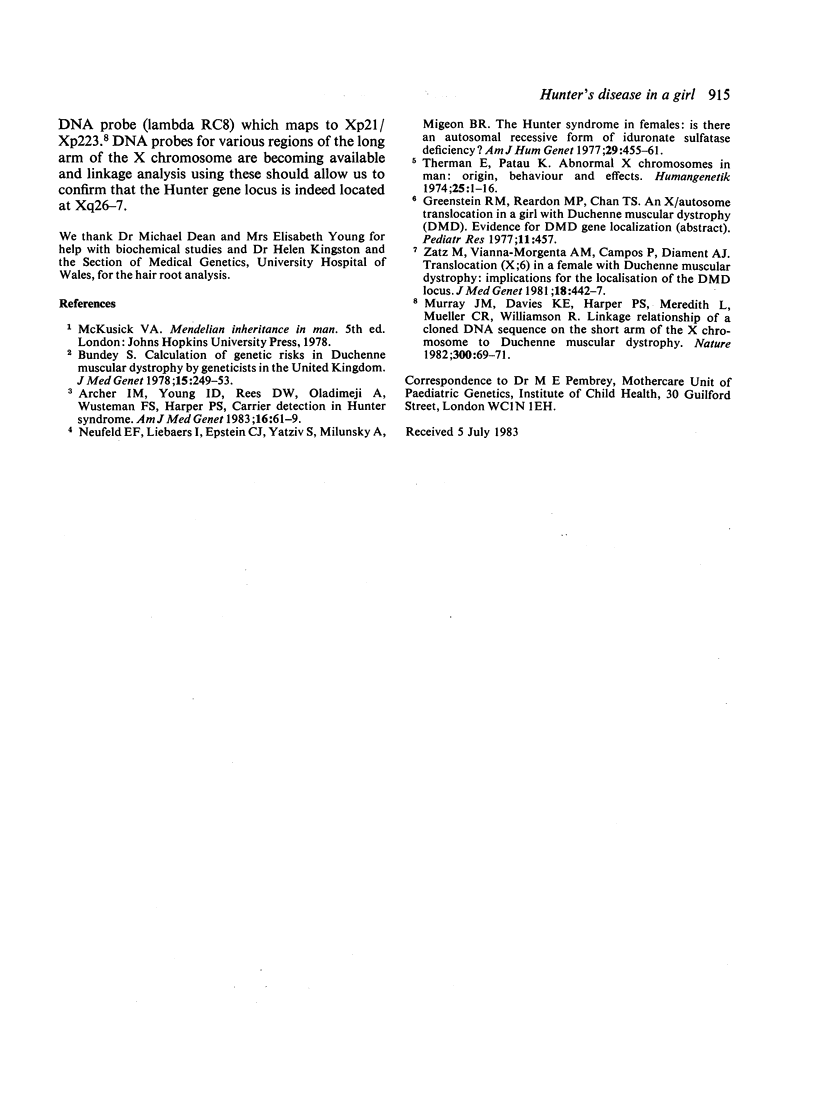
Images in this article
Selected References
These references are in PubMed. This may not be the complete list of references from this article.
- Bundey S. Calculation of genetic risks in Duchenne muscular dystrophy by geneticists in the United Kingdom. J Med Genet. 1978 Aug;15(4):249–253. doi: 10.1136/jmg.15.4.249. [DOI] [PMC free article] [PubMed] [Google Scholar]
- Murray J. M., Davies K. E., Harper P. S., Meredith L., Mueller C. R., Williamson R. Linkage relationship of a cloned DNA sequence on the short arm of the X chromosome to Duchenne muscular dystrophy. Nature. 1982 Nov 4;300(5887):69–71. doi: 10.1038/300069a0. [DOI] [PubMed] [Google Scholar]
- Neufeld E. F., Liebaers I., Epstein C. J., Yatziv S., Milunsky A., Migeon B. R. The Hunter syndrome in females: is there an autosomal recessive form of iduronate sulfatase deficiency? Am J Hum Genet. 1977 Sep;29(5):455–461. [PMC free article] [PubMed] [Google Scholar]
- Therman E., Patau K. Abnormal X chromosomes in man: origin, behavior and effects. Humangenetik. 1974;25(1):1–16. doi: 10.1007/BF00281002. [DOI] [PubMed] [Google Scholar]
- Zatz M., Vianna-Morgante A. M., Campos P., Diament A. J. Translocation (X;6) in a female with Duchenne muscular dystrophy: implications for the localisation of the DMD locus. J Med Genet. 1981 Dec;18(6):442–447. doi: 10.1136/jmg.18.6.442. [DOI] [PMC free article] [PubMed] [Google Scholar]





